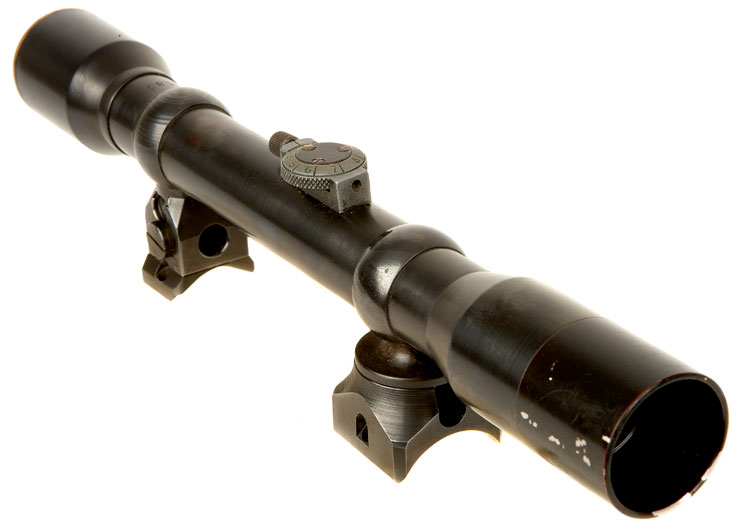

These scopes were designed to work with one or two varieties of weapon, but were largely useless otherwise. Most scopes were “purpose-built,” intended for various battlefield roles such as sniping and infantry shooting. The most common reason for this choice was that snipers dared not risk their scopes being knocked out of alignment while lining up a crucial shot or while getting into or out of firing position. Many snipers disdained variable-sight scopes for fixed scopes with 4x or 8x magnification.

While the standard infantry carried variable-sight scopes which allowed for changes of windage, elevation and magnification, snipers largely set their own standards for scopes based upon personal preference and advanced knowledge of sharpshooting techniques. Because of this, certain high-end scopes adopted etched-glass reticules, but this was largely avoided in the standard field-issue scopes because of expense. While this posed certain advantages, it also made scopes prone to damage from moisture, impact and environmental factors such as aridity. Most early reticule sights were constructed of hair, spiderweb or even human hair. Basic Scope Designĭespite “tweaks” and refinements by opticians such as Zeiss, Bausch and Lomb, and Weaver, basic scope design had not changed a great deal since the Chapman-James telescopic sights invented between 18 by two men in New York. Many of these scope designs have not changed today, and are used in some of the best rifle scopes available in today’s modern combat situations. In this article we will discuss the overall technology of WWII-era scopes and how they were employed in combat. However, for the time these scopes were considered to be the cutting edge of individual warfare and contributed to the kill rates of legendary snipers such as Lyudmila Pavlichenko of the Soviet Union, who retains the world record among female snipers to this day and Matthäus Hetzenauer of Austria.

Despite the obvious technological advances war inevitably gives rise to, the scopes of the day appear hopelessly antiquated compared to modern sniper optics. Retrieved 24 July 2013.Sniper rifle technology was still relatively primitive during World War II. Sniper Rifles: From the 19th to the 21st Century. The one-round war: USMC scout-snipers in Vietnam. Flayderman's Guide to Antique American Firearms and Their Values. Stalkers and Shooters: A History of Snipers. Crosshairs on the Kill Zone: American Combat Snipers, Vietnam through Operation Iraqi Freedom. Very sophisticated optical/mechanical instrumentation for government.MST-100 10× for 7.62×51mm (Used by the Marine Corps, FBI & Canada).Hunting Scopes "Falcon", "Hawk" & "Condor", 2 3/4×, 4× & 6× respectively.The last John Unertl, John Robert Unertl, after leaving the company worked his way up to Division President of the optical instrument division of Leitz. And while the company was well known for its rifle scopes, it’s major revenue came from high end optical systems made for various branches of government including very sophisticated optical/mechanical instrumentation, optics for military jet gunsights, fire control optics, and wind tunnel instrumentation ( Schlieren photography systems for the Naval Surface Weapon Center in White Oak, MD). started the company and ran it until his death. There were actually three successive "John Unertls". By 2008 the company had closed its doors. By 2006 the company had begun marketing firearms in addition to their line of scopes including a civilian copy of the Marine Corps MEU(SOC) pistol and the M40A3 Sniper Rifle. In the early 2000s the Marine Corps began phasing out Unertl Scopes in favor of other scopes like the Schmidt & Bender 3–12×50 Police Marksman II LP. Rocky Greene) and the headquarters was moved to Las Vegas, Nevada. In 2002 the company was purchased by 21st Century Technology, Inc. The company was most notable for its MST-100 (7.62mm) and MST-150 (.50 caliber) 10× scope used by the USMC Scout-Sniper program and the first scope to use a Mil-Dot reticle. John Unertl founded the John Unertl Optical Company in 1934 and the company manufactured military sniper scopes during World War II.


 0 kommentar(er)
0 kommentar(er)
